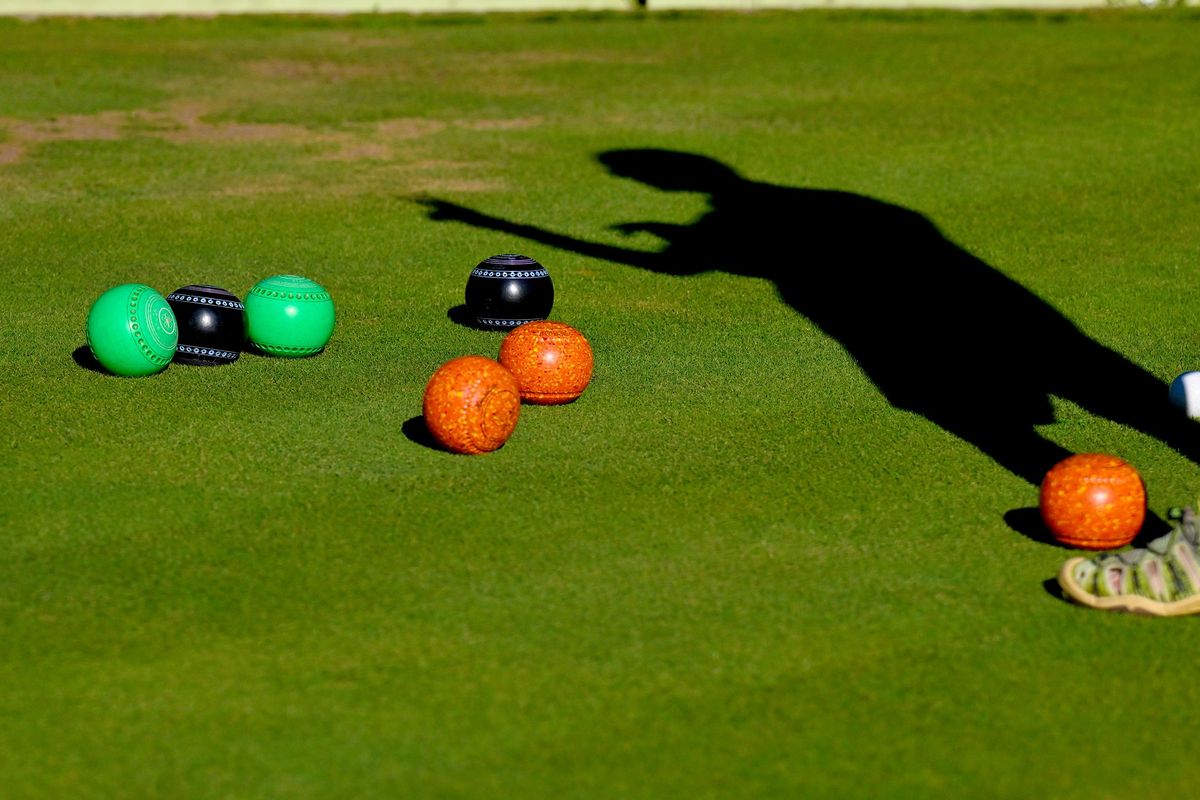Special Interest Group: Lawn bowling involves strategy and camaraderie

Tucked behind Witter Pool in Mission Park, a small green oasis provides the setting for a pastime that’s hundreds, if not thousands of years old.
Every Tuesday and Thursday evening, from late spring through October, members of the Spokane Lawn Bowling Club gather to roll some bowls.
“When you walk in it feels like you’ve descended into 1920,” said member Sally Quirk.
Lawn bowling has a verified 700-year history, but archaeologists have uncovered biased stone bowls from 5000 B.C. The world’s oldest surviving bowling green – the Southampton Old Bowling Green – dates back to 1299.
Locally, the game’s presence is a bit more recent. The Spokane Lawn Bowling Club debuted in 1913 in Manito Park.
“Unfortunately, it flooded every year because it was near one of the park’s natural springs,” Quirk said. “It moved to Albi Stadium for a short time, and in 1981 moved to our present location.”
The clubhouse is the pool’s original bathhouse and is on the historic register. The green or “rink” is lighted, extending the hours of play. Spokane Parks and Recreation owns the property, but club members maintain it.
The game bears little resemblance to the kind of bowling with pins and wooden lanes.
“It’s like bocce ball only better,” Quirk said.
Played by teams of two to four, each team rolls a ball called a “jack” down the “rink” (green). Then it’s all down to skill and strategy.
“The object is to get the closest to the jack,” she said. “But it’s the only game where you don’t aim at the target!”
That’s because the bowls (not balls) rolled toward the jack are elliptical and the subtle slope of the bowl causes it to curve. Bowls usually weigh about 3 pounds.

The rink is bracketed by ditch boards. Bowls that fall into the ditch are disregarded, however close the jack may be to the ditch unless they happen to touch the jack before going into the ditch. In that case, they are still classified as in play.
“Our ditch boards are deteriorating,” Quirk said. “We got a grant from the Spokane Parks Foundation for new boards. We have Alaskan yellow cedar ready, but we don’t have anyone to install them. Most of our members are older, so we are looking for volunteers to help put them in.”
A point is awarded to the team whose bowl is closest to the jack at the end of a round (or “end”).
To determine those points, many players carry measuring tapes in their pockets to accurately assess which bowls are closest.
“It’s a game made of fractions and inches,” said Sam Compogno.
He and his wife, Candee, have been members of Spokane Lawn Bowling for 24 years.
“It’s something that we both can do,” he said. “And women are on equal footing with men.”
Candee Compogno smiled as she prepared to play.
“It’s easy to learn but takes a lifetime to master. There’s a lot of strategy.”
The game is suitable for all ages, and club members welcome newcomers and are happy to provide instruction.
The Spokane River is just behind the fence and Quirk enjoys playing in such a lovely place.
“The beauty of it, seeing the sunsets,” she said. “A cool breeze comes up from the river.”
But she’s also drawn by the camaraderie and sportsmanship of the group.
“There’s a certain satisfaction in a good bowl,” she said. “I don’t really care about the score, but when I have a good bowl and avoid the obstacles and everyone cheers, it’s awesome!”
For more information visit https://spokanelawnbowlingclub.weebly.com/